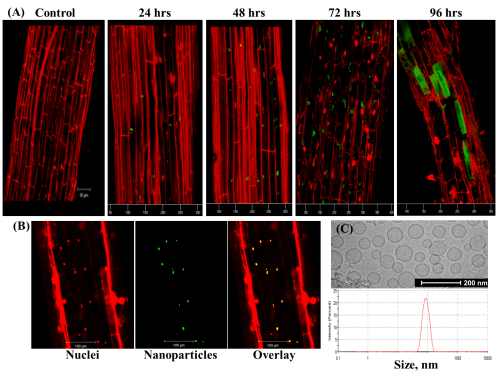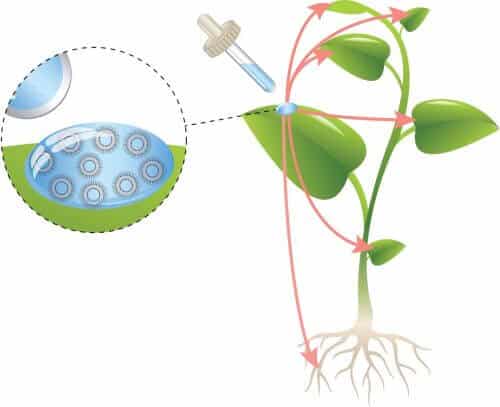A technology developed at the Technion is expected to significantly increase the yield of agricultural crops. This is through nanometric convective platforms that have been used so far for medical purposes

Researchers at the Technion have developed an innovative technology for introducing nutrients to plants. The study was published in the journal Scientific Reports and was presented in Nature Press. The innovative technology increases the penetration rate of the nutrients into the plant from 1% to about 33%. It is based on nanometer transportation platforms that have been used so far to deliver drugs to targets in the sick person's body.
Precise transfer of drugs using nanoscale platforms is a relatively new approach in medical research. This approach is at the center of the activity of the Laboratory for Targeted Medicines and Personal Medicine Technologies in the Wolfson Faculty of Chemical Engineering at the Technion. The current study, which presents the adaptation of this technology to the field of agriculture, was conducted by the head of the laboratory Prof. Mishna Avi Schroeder and the Master's student Avishai Karni. According to Associate Professor Schroeder, "The constant increase in the world's population requires more efficient agricultural technologies, which will produce more and healthier food and reduce environmental damage. The current research provides a new way to inject the essential nutrients into the plant without harming the environment."

The researchers loaded the nutrients onto liposomes - spherical vesicles produced in the laboratory and made of a fatty shell with the required nutrients inside. These particles are stable in the aqueous environment of the body (or plant) and are able to penetrate into the cell. Furthermore, the Technion researchers know how to "program" them so that they break down and release the charge exactly at the desired place and time, i.e. inside the cell only. The decomposition occurs based on the acidity level of the environment or through an external stimulus such as light waves or heat. It is worth noting that the molecules that make up the particles are extracted from the soybean plant and are therefore approved and safe for consumption by humans and animals.
In the current experiment, the researchers used liposomes with a diameter of 100 nm to introduce nutrients - iron and magnesium - into young and mature tomato bushes. They showed that the liposomes, sprayed on the leaves in a solution, did penetrate them and reached other leaves and roots. Only when they penetrated into the root cells did they disintegrate and release the nutrients. As mentioned, this technology increased the rate of penetration of the substances into the plant from about 1% to about 33%.
Along with demonstrating the high efficiency compared to standard spraying methods, the researchers also referred to regulatory limitations related to the dispersion of volatile particles. "Our engineered liposomes are only stable at a short spray distance, up to 2 meters," explains Associate Professor Schroeder. "If they move through the air for a greater distance, they break down into safe substances (phospholipids). We hope that the success of our experiment will lead to the expansion of research and the development of similar agricultural applications, which will increase the agricultural yield in various plants."
